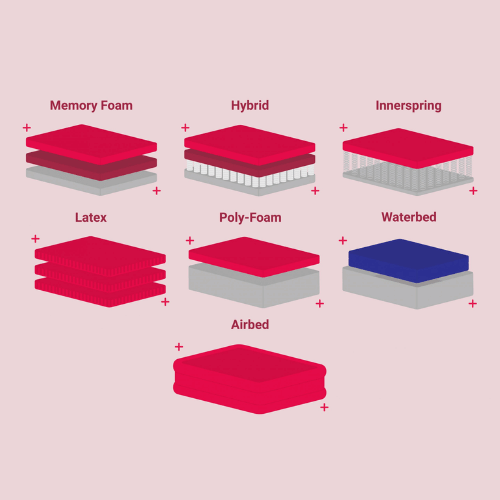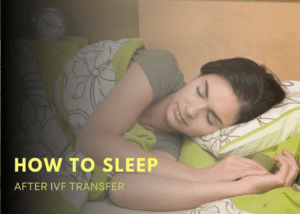Choosing the right mattress for a child can be a daunting task. It’s important to take into account the size, weight, and support needs of the child.
Parents want only the best for their children, and that includes making sure they get quality sleep. A good mattress can make all the difference in improving your child’s comfort and sleep quality. With so many options on the market, it can be hard to know what’s best.
This guide will help make choosing a mattress easier and ensure you get one that offers your child all the necessary comfort and support they need to get restful sleep night after night.
Read on to learn more about how to select a perfect mattress for your youngster.
Factors To Consider

Choosing the right mattress for a child can be tricky, but it doesn’t have to be. It’s important to keep in mind that your child will be sleeping on this bed for many years to come. So picking the right one is essential for their comfort and safety.
One of the first things to consider when shopping for a mattress is your child’s age and size.
Toddlers need a mattress that provides enough support but is not too firm, while older children may require something firmer as they grow heavier.
You’ll also want to consider how much space you have available in the room and if you want a twin or full-sized bed.
Finally, it’s important to think about your budget before making a purchase.
While there are plenty of mattresses available at different price points, expensive isn’t always better. Be sure to do research on the brands and materials used before committing to any one product – after all, you want your child to get a good night’s sleep!
With these factors in mind, let’s move on to looking at different types of mattresses.
Types Of Mattresses

When it comes to selecting the right mattress for your child, there are different types to choose from.
Memory foam mattresses provide excellent support and are ideal for those looking for a medium-firm feel.
Innerspring mattresses offer plenty of bounce and can be customized with additional layers of padding for extra comfort.
Hybrid mattresses combine the best of both worlds and provide a balanced mix of support and cushioning.
No matter which type you decide on, make sure it meets safety standards and has an adjustable firmness level so you can adjust it as your child grows.
Also, keep in mind that some mattresses may require special cleaning products or may need to be flipped regularly; be sure to read the manufacturer’s instructions carefully before making a purchase.
Taking into account all these factors should help you find the perfect mattress for your child’s needs. Now let’s look at what goes into determining the right firmness and comfort level.
Firmness And Comfort Level
When it comes to firmness and comfort level, there are a few factors to consider. For instance, if your child is very active in their sleep habits, you’ll want to look for a mattress that offers more support.
A good example is an 8″ memory foam mattress with an adjustable firmness layer—this type of mattress provides plenty of cushioning while still offering the necessary support.
On the other hand, if your child tends to be a lighter sleeper, you may want to opt for a softer mattress such as one made from natural latex or plush cotton.
In addition to choosing the right type of material, it’s also important to make sure that the mattress fits your child properly.
An ill-fitting mattress can cause uncomfortable pressure points and lead to tossing and turning throughout the night.
If your child has any allergies or respiratory issues, be sure to look for mattresses made with hypoallergenic materials.
TIP: When selecting a mattress for your child, think about their individual needs and pick something that will provide them with a comfortable night’s sleep. That way they will wake up feeling refreshed and ready for whatever comes next!
Sizes Available
When it comes to size, you have a few options. Twin, full, queen, and king mattresses are all available for children. The most important thing is to make sure the mattress is properly sized for your child’s body type and sleeping habits.
For example, if your child tends to move around a lot in their sleep, then a larger size may be better suited. On the other hand, if your child is smaller or sleeps in one position throughout the night, then a twin or full size might be more suitable.
No matter what size you choose, it’s important to make sure that the mattress fits securely on the bed frame. It should not hang off the edge of the bed or sag in any areas—this could pose an injury risk for your child.
Additionally, you’ll want to measure both the length and width of your child’s mattress in order to make sure that it matches up with the dimensions of their bed frame.
Finally, when shopping for a new mattress for your little one, look for one that offers adjustable firmness levels so that you can customize it as they grow older and their needs change over time.
This way they will always have a comfortable night’s sleep!
Safety Standards
When it comes to mattress safety, you should always ensure that your child’s sleeping space is up to the latest standards.
According to the U.S. Consumer Product Safety Commission (CPSC), over 11,500 reported cases of children being injured by mattresses occurred in 2018 alone.
That’s why it’s so important to make sure your child’s mattress meets the federal requirements set by the CPSC.
To start, look for a mattress that has been certified by an independent third-party testing lab, such as UL or CertiPUR-US.
This means that it follows all applicable safety guidelines and has passed rigorous tests for flammability and chemical emissions.
Additionally, make sure that any material used in its construction is fire-resistant; if not, consider purchasing a mattress protector to add an extra layer of protection against flames or sparks from nearby electrical outlets.
Finally, pay attention to the weight limit of your chosen mattress and make sure it won’t collapse under the weight of your child’s body.
With these simple steps in mind, you can rest assured knowing that your little one is sleeping soundly on a safe and comfortable mattress!
Warranty And Return Policies
When it comes to choosing a mattress for your child, it’s important to consider the warranty and return policies. It’s essential that you find a mattress that has a good level of support and comfort and also one that is backed by a solid warranty.
According to recent research, almost half of all mattresses sold in the U.S. come with warranties that are shorter than 10 years, which is why it’s so important to read up on the warranties offered before making your purchase.
Here are some key points about mattress warranties and returns you should be aware of:
- Make sure there is an option for free trial periods; this will allow you to test out the mattress before committing to a purchase.
- Check to see if there is an option for an extended warranty; this will provide more protection in case something goes wrong with the mattress down the line.
- Determine if there are any cost implications; this could include restocking fees or other costs associated with returning the mattress if it doesn’t work out.
- See what kind of customer service is available; this can help ensure that any problems or questions you have can be addressed quickly and professionally.
When researching your options, be sure to take these factors into consideration so that you can make an informed decision about what type of mattress will best suit your child’s needs.
That way, you can ensure they get a great night’s sleep every night! With all these things in mind, let’s move on to discussing price range when selecting a new mattress for your child.
Price Range
Price is another major factor to consider when getting a mattress for your child.
You want to make sure you get the best value for your money, so it’s important to do research and compare prices from different retailers.
It’s also important to keep in mind that mattresses range in quality and price.
Generally speaking, more expensive mattresses tend to have better support, comfort, and durability.
However, this isn’t always the case, so it’s important to read reviews and do research on different models before making a purchase decision.
In addition, if you’re looking for a more budget-friendly option, you can consider buying a used mattress or one that is on sale.
Just make sure it has been sanitized properly and meets safety standards before buying it.
Delivery and installation options are key considerations when shopping for a new mattress for your child. In the next section, we’ll discuss these factors in more detail.
Customer Reviews
When choosing a mattress for your child, it’s important to read customer reviews. By reading reviews from other customers, you can get a better idea of how the mattress performs and if it meets their expectations.
This will also let you know what to expect in terms of comfort and durability when you make your purchase.
When looking at customer reviews, pay attention to the overall rating and look for any common issues that have been mentioned by multiple reviewers.
If there is a recurring problem with the mattress, such as sagging or lack of support, this could be something to be aware of before making a decision.
Finally, research the company behind the mattress.
Check out their website to see if they offer anything like warranties or money-back guarantees on their products. This will give you peace of mind knowing that if something does go wrong with your purchase, you’ll have some kind of recourse.
Look for customer service ratings as well – this will tell you whether or not the company is quick to respond and willing to help with any problems you may have in the future.
Frequently Asked Questions
How Often Should I Replace A Mattress For My Child?
Replacing a child’s mattress should be done regularly. How often depends on the mattress and how much it’s used.
Generally, a mattress lasts between five and seven years. After that, you should consider replacing it.
When deciding whether to replace your child’s mattress, look for signs of wear and tear. If the material is sagging or lumpy, or if your child has allergies that may have been caused by the mattress itself, then it’s time for a new one.
Additionally, as your child grows older their sleeping habits may change and they may need more support from a new mattress for better sleep quality.
You should also factor in your budget when replacing a mattress for your child.
While there are many options out there that range widely in price, you should make sure you are getting quality materials that will provide support and comfort for your little one over time.
TIP: Before buying a new mattress, do some research online to compare different brands and models to find the best option for your budget and needs.
Is A Mattress Protector Necessary?
It’s a question that many parents ask: is a mattress protector necessary? It’s something of an enigma, and one that can be a source of confusion.
On the one hand, it’s essential to keep mattresses clean and free from dust mites and other allergens; on the other, providing extra protection for your child’s mattress may seem like overkill.
So what should you do? The answer is both simple and complex. Simply put, yes, a mattress protector is necessary – but there are also certain factors to consider before making this purchase.
First of all, it’s important to think about how often your child’s mattress will need to be replaced.
If it’s going to be used for several years, or if your child is prone to spills or accidents, then investing in a mattress protector is definitely worth it.
Not only will it provide an extra layer of protection against stains, but it’ll also help keep the mattress clean and hygienic over time.
Additionally, if your child has allergies or asthma, they’ll benefit from having an extra layer between them and any allergens in the air.
A mattress protector isn’t just about protecting your bedding; it’s also about safeguarding your family’s health and wellbeing.
So when considering whether or not to invest in one, make sure you take these factors into account before making your decision.
What Is The Best Type Of Mattress For My Child’s Age?
When it comes to choosing a mattress for your child, the type of mattress you select can be just as important as the size. The best type of mattress for your child will depend largely on their age, as infants and very young children require different types of mattresses than older children.
For infants and toddlers, look for a firm mattress with a tight top layer.
This will provide the necessary support and stability your baby needs for proper development. For preschoolers and early elementary-aged children, look for a slightly softer mattress that still has enough support.
A memory foam or hybrid mattress may be a good option at this age. As your child gets older, they may want more comfort and cushioning in their bed.
Late elementary-aged kids up through teens can benefit from an all-foam mattress with layers of padding and cushioning that are specifically designed to relieve pressure points.
TIP: Don’t forget to consider your own budget when selecting a mattress type – while some higher end materials may provide better comfort or support, they could also come with a hefty price tag!
Are There Any Health Benefits To Having A Mattress For My Child?
It’s a question all parents want an answer to: are there any health benefits to having a mattress for my child? From the moment babies are born, we want them to be as safe and healthy as possible.
It may surprise you to learn that finding the right mattress for your child’s age can do just that.
For infants, it’s important to find a mattress with firm support and minimal cushioning. This helps prevent Sudden Infant Death Syndrome (SIDS) by reducing the risk of suffocation.
As they grow older, toddlers should have something softer but still supportive so they can get a good night’s sleep while avoiding developing poor posture or back pain in later life.
Wherever your child is in their development, it pays to invest in quality.
Mattresses come in all shapes, sizes and materials; choose one that meets your needs and budget without compromising on safety or comfort standards.
Not only will this help keep your child healthy now, but also create good habits for their future. So when it comes to choosing the best mattress for your little one, don’t skimp on quality – their wellbeing depends on it!



